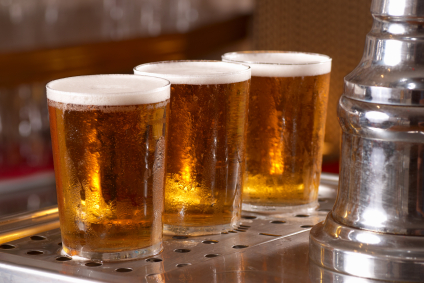Is there an oligopoly in the beer market? An oligopoly occurs in a business when there are only a small number of major players in an industry. Like a board-game-inspiring monopoly, an oligopoly usually spells bad news for the consumer – and can land a company in legal hot water if abuse is suspected.
In 2009, in the midst of a terrible recession and decreased beer demand, Anheuser-Busch InBev and MillerCoors started raising beer prices. These two companies dominate the beer scene, and together make up 80% of the entire market. This bold price increase in the face of a emotional strapped customer base only shows how powerful Big Beer has become.
A New York Times columnist wondered if companies were playing with fire. The Obama Administration has been taking a tougher stance on monopolistic behavior like this, and has even indicated there are companies that merged under the Bush Administration that might be subject for review.
In an oligopoly, a kinked demand curve exists. An oligopoly demand curve represents a deviation from a regular demand curve (which represents price on the vertical and quantity on the horizontal, symbolizing that quantity of a given product affects the price) with “kink”, caused by rivals decreasing price to match their competitors but not rising prices. This kinked demand curve occurred within the beer market in 2005, when MillerCoors was bought by South African Breweries. Anhauser Busch InBev responded to this acquisition by drastically lowering prices. Because the beer business is an oligopoly and therefore operates on a kinked curve, all the other big breweries had to follow suit and lower prices.
Usually, oligopolistic industries don’t follow this kinked demand curve in the other direction and price match when competitors raise prices. This is what makes the beer case so unusual: what company wants to be on the receiving end of an antitrust review? If a case like this goes to court and a corporation is found to be anticompetitive, that could mean bad news for a company’s bottom line.

